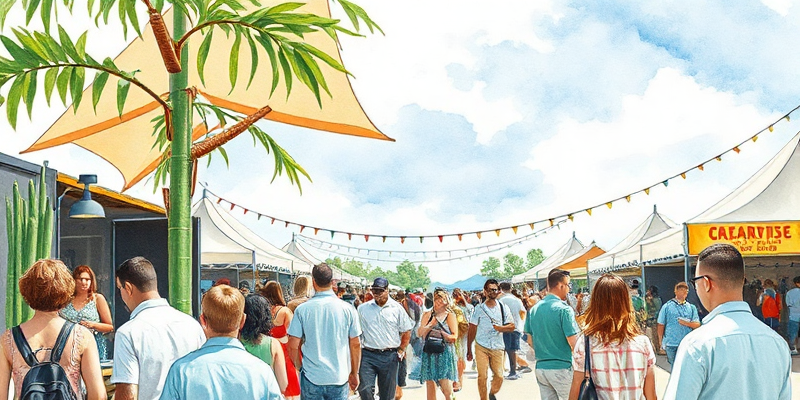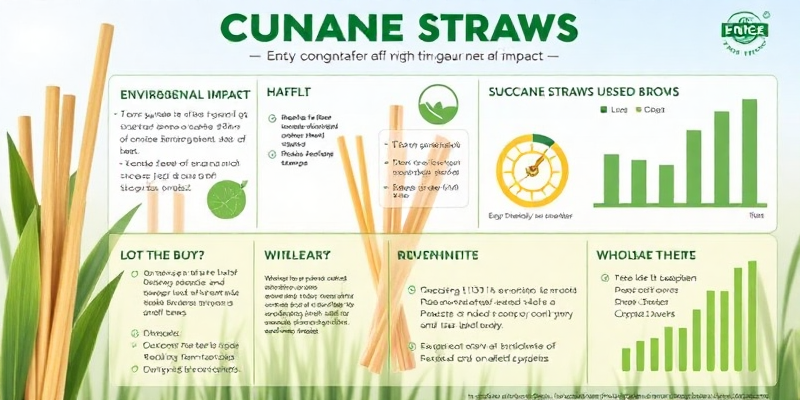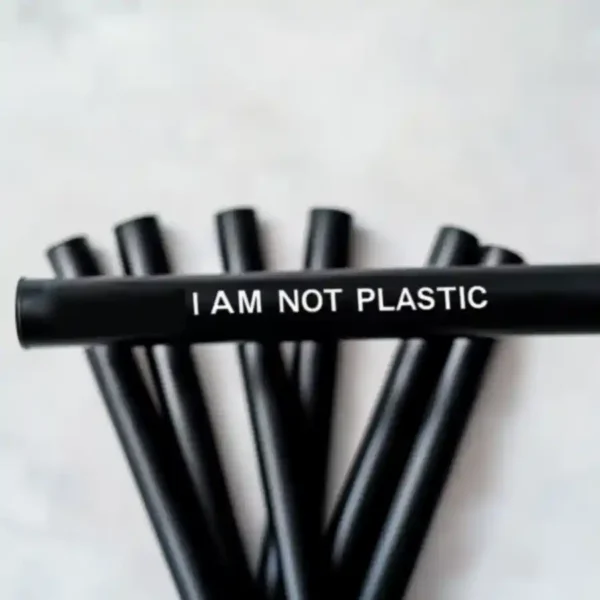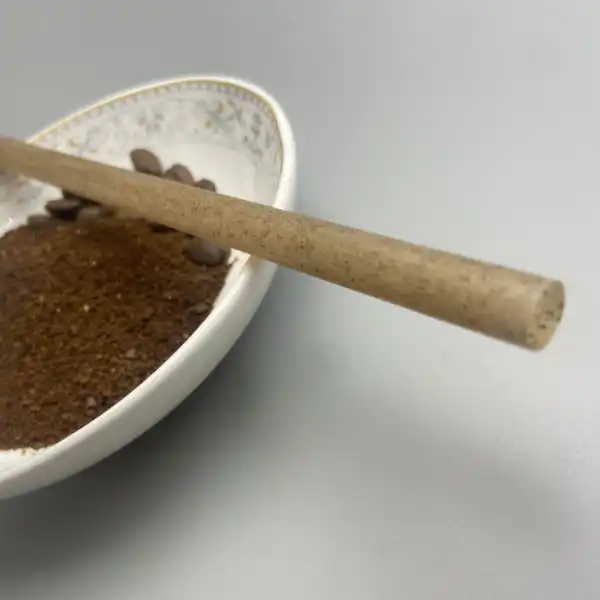Sugarcane Straws: Eco-Friendly B2B Solutions for 2025

Introduction: The Shifting Landscape of Single-Use Products

Picture this: It’s a busy Friday night at your hotel bar or restaurant. Hundreds of drinks are being served, each with a straw. Now imagine that by the end of the night, instead of contributing bags of plastic waste destined for landfills or oceans, your busines has generated only compostable materials that will break down naturally within weeks.
This isn’t just an environmentalist’s dream—it’s becoming a global busines reality. As we move deeper into 2025, plastic straw bans are no longer merely trending; they’re becoming standardized regulations acros continents. From California to the European Union, from Australia to parts of Asia, restrictive legislation on single-use plastics has created not just a challenge but a genuine opportunity for forward-thinking businesses.
According to recent research, single-use plastic straws can take up to 200 years to decompose, while releasing harmful microplastics into our environment. In stark contrast, sugarcane straws decompose completely within 90 days in commercial composting facilities and typically under 180 days in home composting settings.
The sugarcane straws environmental impact is remarkably positive compared to conventional plastic. Derived from bagasse—the fibrous byproduct left after extracting juice from sugarcane—these straws repurpose what would otherwise be agricultural waste. This circular economy approach reduces waste while creating valuable products.
Learn about custom-branded solutions for your busines that can enhance your sustainability profile while meeting practical needs.
Beyond the environmental considerations, there’s a strong busines case for making the switch now rather than later. With consumers increasingly making purchasing decisions based on a company’s sustainability practices, adopting eco-friendly alternatives like sugarcane straws positions your busines ahead of both regulatory curves and market expectations.
Regulatory Compliance: Certifications for Sugarcane Straws

Navigating the complex regulatory landscape of food-contact materials can be challenging, especially when sourcing sustainable alternatives. For B2B buyers, understanding certification requirements isn’t just about checking boxes—it’s about ensuring product safety, legal compliance, and protecting your brand reputation.
Sugarcane straws require specific certifications to be legally marketable in different regions. The most important include FDA compliance in the United States and LFGB certification for the European market. These certifications ensure that the products are safe for food contact and don’t contain harmful chemicals or substances that might migrate into beverages.
According to a 2024 industry report, businesses failing to comply with single-use plastic regulations face fines averaging $10,000 per violation in major U.S. cities, with some jurisdictions implementing escalating penalties for repeat offenders.
Beyond mandatory certifications, look for additional credentials that signal quality and environmental responsibility:
- Home compostability certification
- BPI (Biodegradable Products Institute) certification
- Non-GMO verification
- Chemical-free processing documentation
Discover humidity-resistant options for tropical climates that maintain their integrity even in challenging environmental conditions while meeting all necessary regulations.
When sourcing from global suppliers, verification becomes even more critical. Request comprehensive documentation directly from manufacturers, including test results from accredited third-party laboratories. The FDA’s guidelines on food-contact materials provide essential information about compliance requirements that apply to imported sustainable alternatives.
Remember that regulatory compliance isn’t just about avoiding penalties—it demonstrates your commitment to customer safety and environmental responsibility, building trust with increasingly conscious consumers.
How Sugarcane Straws Compare to Other Eco Alternatives

With numerous sustainable straw options flooding the market, making an informed decision requires understanding the comparative advantages of each material. Here’s how sugarcane straws stack up against other popular eco-friendly alternatives:
| مواد | پائیداری | Composting Time | Heat Resistance | Mouthfeel | Price Point |
|---|---|---|---|---|---|
| ———- | ———— | —————– | —————– | ———– | ————- |
| گنے | 3-4 hours in liquids | 90-180 days | Up to 185°F | Natural, rigid | $$$ |
| کاغذ | 1-2 hours | 30-60 days | Limited | Often becomes soggy | $ |
| PLA (Corn) | 4+ hours | 180+ days (industrial only) | Up to 105°F | Plastic-like | $$ |
| بانس | Reusable | Non-compostable | اعلی | Woody | $$$$ |
| Metal | Reusable | Non-compostable | Very high | Metallic, conducts temperature | $$$$$ |
According to a 2024 consumer experience survey, 73% of hospitality customers reported dissatisfaction with paper straws due to their tendency to become soggy, while sugarcane straws maintained a 91% satisfaction rating for their texture and performance.
Sugarcane straws offer several distinct advantages for specific busines applications:
- They maintain structural integrity in cold drinks for 3-4 hours—significantly longer than paper alternatives
- Unlike PLA straws, they’re truly home compostable without requiring industrial facilities
- They provide a natural feel similar to conventional plastic without the environmental downsides
- They’re heat-resistant enough for hot beverages, unlike many bioplastic options
Explore specialized eco-friendly cocktail straws for upscale beverage service that maintain both sustainability and premium aesthetics.
While paper straws may offer a lower initial price point, their performance limitations often result in higher consumption rates and customer dissatisfaction. PLA straws, while durable, require industrial composting facilities that many regions lack. Reusable options like metal or bamboo introduce washing costs and replacement needs that must be factored into total cost analysis.
Top Busines Benefits of Switching to Sugarcane Straws

Making the transition to sugarcane straws delivers tangible busines advantages beyond environmental benefits. Forward-thinking companies are discovering that sustainability initiatives like these directly impact their bottom line.
First, there’s the marketing advantage. In today’s marketplace, sustainable practices aren’t just nice-to-have—they’re increasingly expected. A 2025 Nielsen global survey revealed that 78% of consumers are more likely to choose brands that demonstrate environmental responsibility, with 67% willing to pay a premium for sustainable products and services.
Learn how educational institutions are implementing sustainable straw programs that both reduce waste and serve as teaching tools about environmental responsibility.
Second, customization opportunities allow businesses to transform necessary items into branding vehicles. Custom-printed sugarcane straws with your logo or message extend your brand presence while showcasing your sustainability commitment—a dual benefit that plastic straws never offered.
Third, there’s the employee engagement factor. Staff members, particularly millennials and Gen Z who make up an increasing percentage of the workforce, report higher satisfaction when working for environmentally responsible organizations. Your sustainable choices become recruiting and retention tools.
Fourth, sugarcane straws create opportunities for storytelling. From table tents to social media posts, the sustainable journey of your straws—from agricultural byproduct to compostable waste—provides compelling content that resonates with customers.
Finally, the cost-benefit analysis increasingly favors sustainable alternatives as:
- Plastic straw bans eliminate cheaper but non-compliant options
- Bulk purchasing of sugarcane straws reduces per-unit costs
- Premium perception justifies slight menu price increases if necessary
- Waste management costs decrease with compostable items
- Brand loyalty and customer retention improve with visible sustainability efforts
Environmental Impact: Why Sugarcane Straws Win

The environmental advantages of sugarcane straws extend far beyond simply avoiding plastic. When examining their complete lifecycle, these sustainable alternatives deliver multiple environmental benefits that make them particularly attractive for environmentally conscious businesses.
According to the United Nations Environment Programme, switching from conventional plastic straws to sugarcane alternatives can reduce the carbon footprint by up to 70% over the product lifecycle. This significant reduction comes from several factors in the production and disposal proces.
Explore sustainable solutions for events and large gatherings where single-use items are often essential but environmental impact is a growing concern.
Unlike plastic production, which relies heavily on fossil fuel extraction and energy-intensive manufacturing processes, sugarcane straws utilize agricultural byproducts. The bagasse fiber used in these straws would otherwise be burned or discarded after sugar extraction, making this a perfect example of circular economy principles in action.
During their growth phase, sugarcane plants actually sequester carbon dioxide from the atmosphere through photosynthesis. This creates a partially carbon-negative starting point that offsets some emissions from processing and transportation.
Water usage represents another significant advantage. While plastic production requires approximately 8 liters of water per straw (including petrochemical extraction and manufacturing), sugarcane straws typically require les than half that amount, even accounting for agricultural water needs.
The UNEP’s report on plastic alternatives highlights biodegradability as a critical factor in evaluating sustainability, with sugarcane products performing exceptionally well compared to both conventional plastics and many “biodegradable” alternatives that require specific industrial conditions to break down.
When properly composted, sugarcane straws return valuable nutrients to soil rather than persisting as environmental contaminants or microplastics. This complete lifecycle—from agricultural byproduct to soil amendment—represents true circularity in product design.
Case Study: Sugarcane Straws Succes in Action

The Ocean Breeze Resort Chain operates 12 beachfront properties acros tropical destinations in Southeast Asia and the Caribbean. In 2023, they faced dual challenges: complying with new plastic regulations in multiple jurisdictions while maintaining their premium guest experience in humid environments where paper straws quickly deteriorated.
After testing multiple sustainable alternatives, they partnered with NatureBioEco to implement a comprehensive sugarcane straw program acros all properties. The results after 18 months have been remarkable:
- 2.4 million plastic straws eliminated annually from their waste stream
- 87% reduction in straw-related customer complaints compared to their brief paper straw trial
- $32,000 in avoided regulatory fines acros jurisdictions with plastic bans
- 15% increase in positive social media mentions related to sustainability
- Featured in two travel industry publications for environmental leadership
Their sustainability director, Maria Chen, notes: “The humidity-resistance of the sugarcane straws proved critical for our tropical locations. Unlike paper alternatives that became mushy within minutes, these maintained their structure even in our signature frozen cocktails served poolside in high humidity.”
Discover the comprehensive benefits of sugarcane straws for modern businesses looking to balance practical needs with environmental responsibility.
The resort also implemented a custom-branded design featuring their logo and a brief message about ocean conservation, turning a necessary item into a marketing touchpoint. The straws became conversation starters, with staff reporting increased engagement with guests around the resort’s broader sustainability initiatives.
Most importantly, the switch delivered financial benefits. While the per-unit cost was initially 2.2 cents higher than conventional plastic straws, the combination of avoided fines, improved guest satisfaction, and marketing benefits delivered an estimated 340% return on their additional investment.
اکثر پوچھے گئے سوالات
- How do sugarcane straws perform in different beverage types?
- Sugarcane straws maintain their structure for 3-4 hours in cold beverages and up to 2 hours in hot drinks below 185°F. They perform exceptionally well in smoothies, cocktails, and sodas without affecting taste. Unlike paper alternatives, they don’t become soggy quickly, and unlike PLA straws, they won’t deform in hot beverages.
- What customization options are available for B2B orders?
- Customization includes branded printing with your logo in up to two colors, custom lengths ranging from 5.5″ to 8.5″, diameter options (standard or jumbo/boba size), and packaging variations. Minimum order quantities for customization typically start at 25,000 units, with lead times of 4-6 weeks for initial orders and 3-4 weeks for reorders.
- How should sugarcane straws be stored in commercial environments?
- Store sugarcane straws in their original packaging in a cool, dry place away from direct sunlight. While they’re more humidity-resistant than paper alternatives, extremely humid environments (90%+ humidity) may gradually affect texture over many weeks. No refrigeration is required, and shelf life typically exceeds 18 months when properly stored.
- What is the cost comparison between sugarcane straws and other alternatives?
- At scale, sugarcane straws typically cost 1.5-2.5 cents more per unit than conventional plastic straws but offer similar or better pricing compared to PLA alternatives. They’re generally 10-15% more expensive than basic paper straws but deliver significantly better performance and customer satisfaction. Volume discounts are available starting at 100,000+ units.
- How do I implement a proper composting program for these straws?
- For busines implementation, partner with your existing waste management provider to confirm commercial composting capabilities. If unavailable, consider specialty compost collection services for businesses or community composting programs. On-site composting is feasible for businesses with sufficient outdoor space. NatureBioEco provides complimentary composting guidance documentation with B2B orders.
- What certifications should I look for when sourcing sugarcane straws?
- Essential certifications include FDA compliance (US), LFGB certification (Europe), and home compostability verification. Additional beneficial certifications include BPI (Biodegradable Products Institute) certification, non-GMO verification, and chemical-free processing documentation. Always request test reports from accredited laboratories.
- Are there minimum order quantities for B2B purchases?
- Standard minimum orders start at 10,000 units for non-customized products. Custom-printed or specially sized straws typically require 25,000-unit minimums. Distributor partnerships or ongoing supply contracts may qualify for lower MOQs. Sample packs containing 100-500 units are available for testing before larger commitments.






